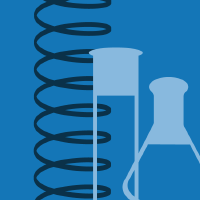Topic Editors


Chromatography–Mass Spectrometry Analysis in Biomedical Research and Clinical Laboratory
Topic Information
Dear Colleagues,
It is recognized that chromatography–mass spectrometry introduced a revolution in biomedical research, offering specificity and sensitivity superior to that of other analytical techniques. It is currently an intensively developing scientific field that comprises the development and application of new methods using state-of-the-art equipment. The present Topic aims to cover the latest research trends and achievements of chromatography–mass spectrometry in biomedical, clinical, and pharmacological research by highlighting novel applications and novel approaches in sample treatment and instrumental analysis. Researchers working on all aspects of basic research and applications in biomedical and clinical sciences are cordially invited to contribute a research or review article in this Topic.
Dr. Constantinos K. Zacharis
Dr. Andreas Tsakalof
Topic Editors
Keywords
- chromatography–mass spectrometry in biomedical research
- bioanalysis
- biomarkers of disease
- biomarkers of exposure
- omics research: metabolomics, volatolomics, lipidomics, proteomics
- drugs development
- therapeutic drug monitoring
- biosample preparation
Participating Journals
| Journal Name | Impact Factor | CiteScore | Launched Year | First Decision (median) | APC | |
|---|---|---|---|---|---|---|

Analytica
|
- | 1.8 | 2020 | 17.9 Days | CHF 1000 | Submit |

Journal of Clinical Medicine
|
3.0 | 5.7 | 2012 | 16 Days | CHF 2600 | Submit |

Separations
|
2.5 | 3.0 | 2014 | 15.1 Days | CHF 2600 | Submit |

Biomolecules
|
4.8 | 9.4 | 2011 | 18.4 Days | CHF 2700 | Submit |

Molecules
|
4.2 | 7.4 | 1996 | 15.1 Days | CHF 2700 | Submit |

International Journal of Molecular Sciences
|
4.9 | 8.1 | 2000 | 16.8 Days | CHF 2900 | Submit |

MDPI Topics is cooperating with Preprints.org and has built a direct connection between MDPI journals and Preprints.org. Authors are encouraged to enjoy the benefits by posting a preprint at Preprints.org prior to publication:
- Immediately share your ideas ahead of publication and establish your research priority;
- Protect your idea from being stolen with this time-stamped preprint article;
- Enhance the exposure and impact of your research;
- Receive feedback from your peers in advance;
- Have it indexed in Web of Science (Preprint Citation Index), Google Scholar, Crossref, SHARE, PrePubMed, Scilit and Europe PMC.

